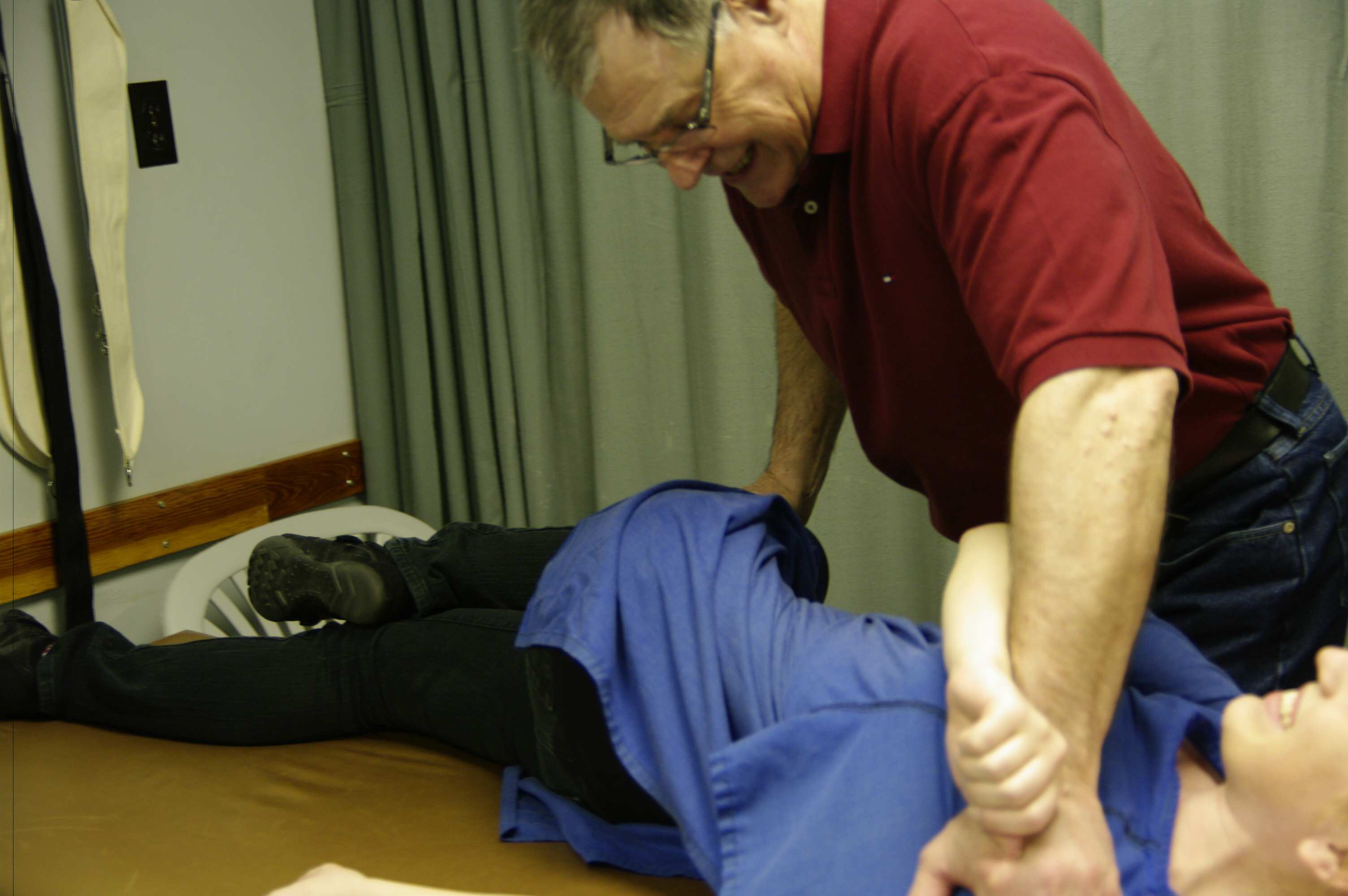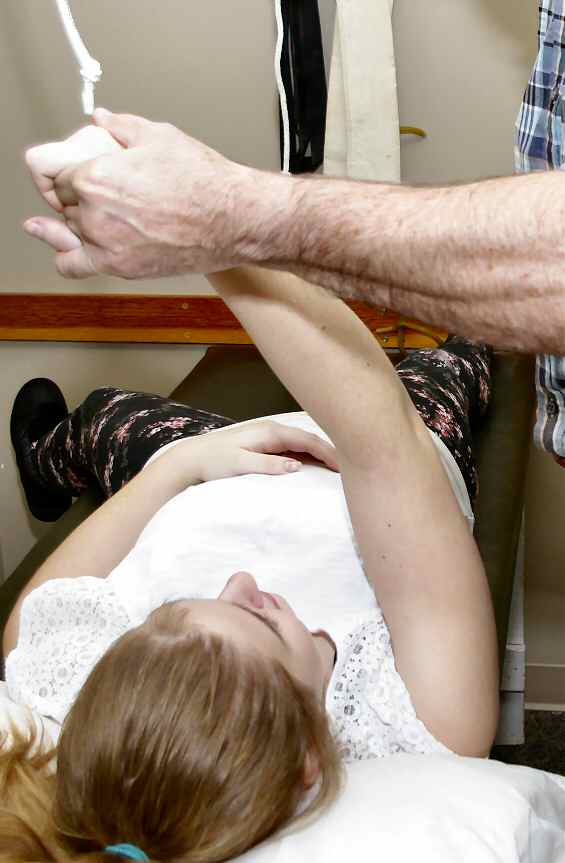Services - Joints
Joint Mobilization
Joint Mobilization
Joint mobilization, performed by a physiotherapist, is a gentle and safe alternative to joint manipulation, performed by a chiropractor. Joint mobilization is done when a bone, or individual vertebrae, is moved in order to release painful tension, stiffness, chronic pain, and in some cases to improve the range of motion of a joint.

The mobilizations themselves are performed by a practitioner in various pressures; for example, grade one mobilizations are gentle movements meant to initiate a full range of movement; grade two mobilizations are applied with slightly more pressure for pain relief; and, grade three mobilizations are a little more intense in order to relieve pain and improve a joint's range of motion. Finally, grade four mobilizations are rather intense stretches meant to relieve tension in chronically damaged joints.
The actual joint mobilization is performed to improve mobility in areas that currently have a limited range of motion due to any type of strain, stiffness, tightness, injury, paralysis or chronic pain. The most common joint mobilization is performed on the neck, when its rotated to its full range of motion and then back in sudden thrusts.
The client must remain calm and loose as the mobilization is performed, as often it is accompanied by a pop when the tension is released in the joint (similar to the sound when the knuckles are cracked). A joint manipulation is often followed by a feeling of release.
Joint mobilization strokes consist of basic and advanced mobilizations, thrusts, as well as traction and gliding mobilizations. After the mobilization portion of the therapy is complete, complimentary treatments - such as certain stretching and strengthening exercises - are sometimes recommended as a preventative measure.
If you book an appointment for joint mobilization, the physiotherapist will perform a consultation before starting therapy. During the consultation the therapist will assess your blood supply, nerves, bone and muscles in the afflicted area. Its important for the therapist to conduct this initial consultation in order to determine if joint mobilization is safe.
Joint manipulation is typically safe to perform on most painful joint injuries, such as arthritis; however, a professional should assess each patient before treatment commences.
Sling Therapy
Sling therapy is a system used to increase the range of movement in shoulders, hips and knees. This therapy is used in situations where joint limitations due to pain and weakness restrict active movements. Sling therapy is benefical to:

- Post-operative patients.
- Joint replacement patients.
- Individuals suffering from "frozen shoulder".
- Individuals suffering muscle-tear conditions, and
- Especially for those suffering osteoarthritic conditions.
In sling therapy, there are three types of range of motion exercises: passive; active – assistive; and active range of motion exercises.
In passive range of motion exercises, the physiotherapist will move your limb along the joint range. This is often performed on patients who are unable to move their limb.
Active-assistive range of motion exercises are done on clients who are able to move their limb but need assistance from the physiotherapist to complete the joint range. Sometimes, pain may limit the patient’s ability to actively complete the motion. The physiotherapist may assist the patient to complete the movement to just beyond the point of pain. The pain should not persist or worsen when the motion is stopped.
In active range of motion exercises, the client performs the movement without physical assistance from the therapist. The physiotherapist may still verbally instruct the client on the proper execution of the exercise.
Under the supervision of a physiotherapist, exercises using slings and springs will gradually return mobility and the range of movement to a joint.
Service Links
Physiotherapy
